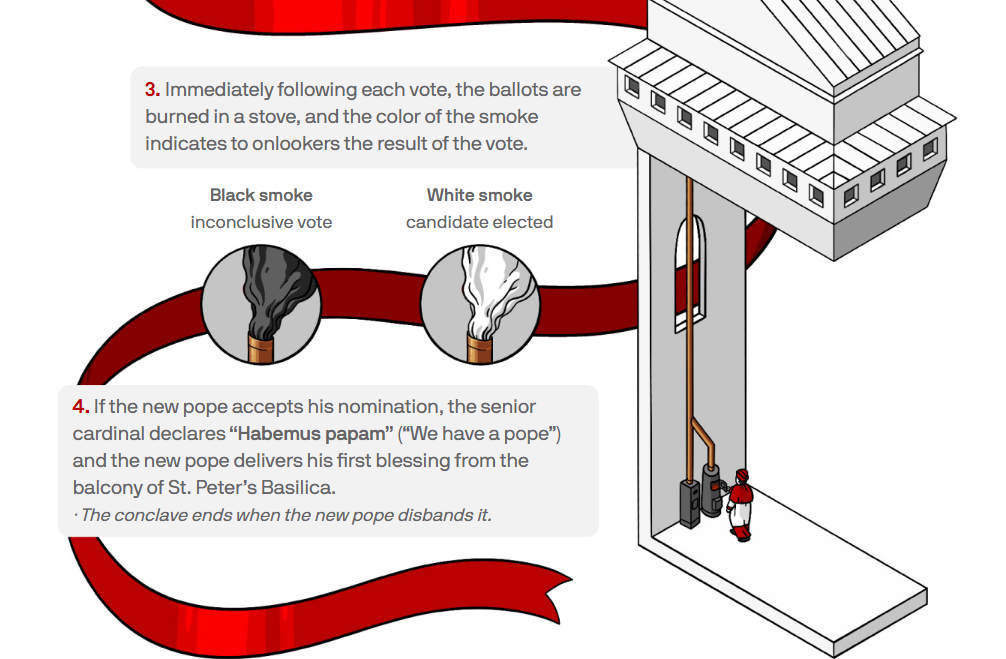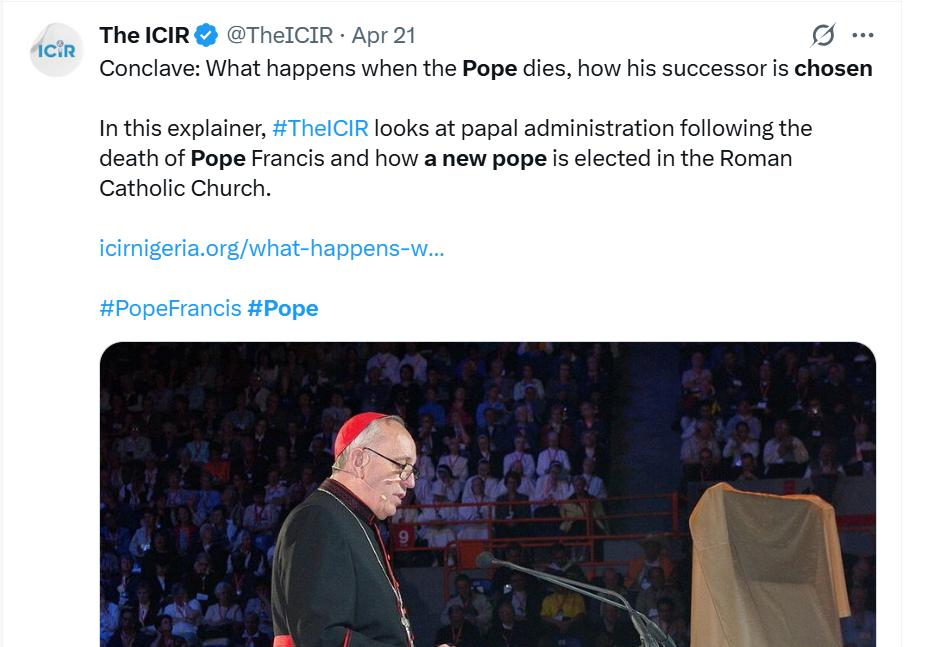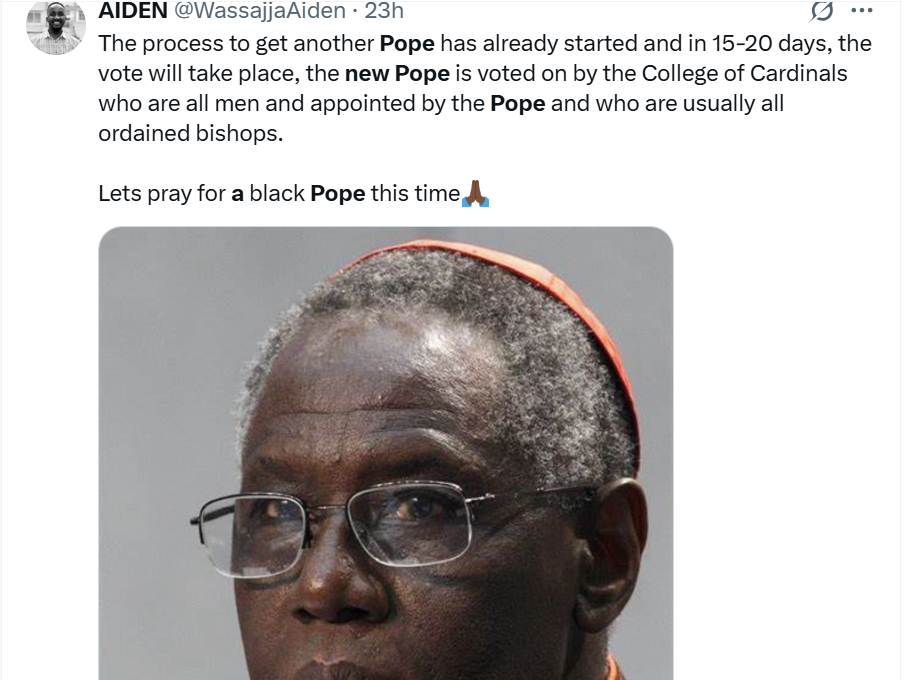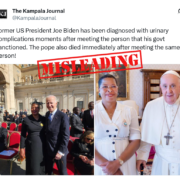How the Catholic Church Elects a New Pope: A Step-by-Step Guide

The passing of Pope Francis on April 21, 2025, has ushered the Catholic Church into a period known as sede vacante, or “the seat being vacant.” This activates a centuries-old, structured process to elect a new pope.
Many users online have been wondering how and what the process is that leads to electing new Pope.
Below is a comprehensive guide to understanding how the Church selects its next leader.
1. Initiation of the Sede Vacante
Upon the Pope’s death, the Camerlengo currently Cardinal Kevin Farrell—officially confirms the demise and oversees the immediate administrative duties of the Vatican. This includes the ceremonial sealing of the papal apartments, symbolizing the end of the deceased pope’s authority. The papal ring, known as the Fisherman’s Ring, is destroyed to prevent its misuse.
2. General Congregations
All cardinals, regardless of age, convene in Rome for General Congregations. These meetings serve to manage Church affairs during the interregnum and to discuss the needs and challenges facing the Church. They also provide an opportunity to contemplate the qualities desirable in the next pope.

3. Eligibility of Cardinal Electors
Only cardinals under the age of 80 at the time of the pope’s death are eligible to vote in the conclave. As of April 2025, there are 135 such cardinal electors, slightly exceeding the traditional limit of 120. While any baptized male Catholic can technically be elected pope, the electors have historically chosen one from among themselves.
Pope Francis is dead: What comes next https://t.co/j1ZLkeKdK5 pic.twitter.com/dPPkKFpesj
— New York Post (@nypost) April 21, 2025
4. The Conclave: Seclusion and Secrecy
The conclave typically commences 15 to 20 days after the pope’s death, allowing time for mourning and logistical preparations. The cardinal electors are sequestered within the Vatican, specifically in the Sistine Chapel, to ensure confidentiality. They take an oath of secrecy, and any breach can result in excommunication.
5. Voting Procedures
Voting is conducted through secret ballots. Each cardinal writes the name of their chosen candidate on a ballot and places it into a chalice on the altar. To be elected, a candidate must receive a two-thirds majority. Up to four ballots can be cast each day—two in the morning and two in the afternoon. After each voting session, the ballots are burned: black smoke indicates no decision, while white smoke signals that a new pope has been elected.

6. Acceptance and Announcement
Once a candidate achieves the required majority, the Dean of the College of Cardinals asks if he accepts the election. Upon acceptance, the new pope chooses a papal name and dons the papal vestments in the Room of Tears, a chamber adjacent to the Sistine Chapel.

Edward Tumwine is a Digital Communications Consultant, Lecturer, and Media Viability Expert with over nine years of experience in media relations, content strategy, and digital communications. He has advised organizations and journalists on media sustainability, new media skills, and leveraging digital tools for impact. Edward currently serves as the Communications Officer at Debunk Media Initiative, where he leads strategic communications to combat misinformation. He also lectures in Multimedia Production at Uganda Christian University’s School of Journalism and Communication.





